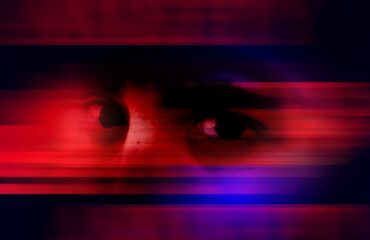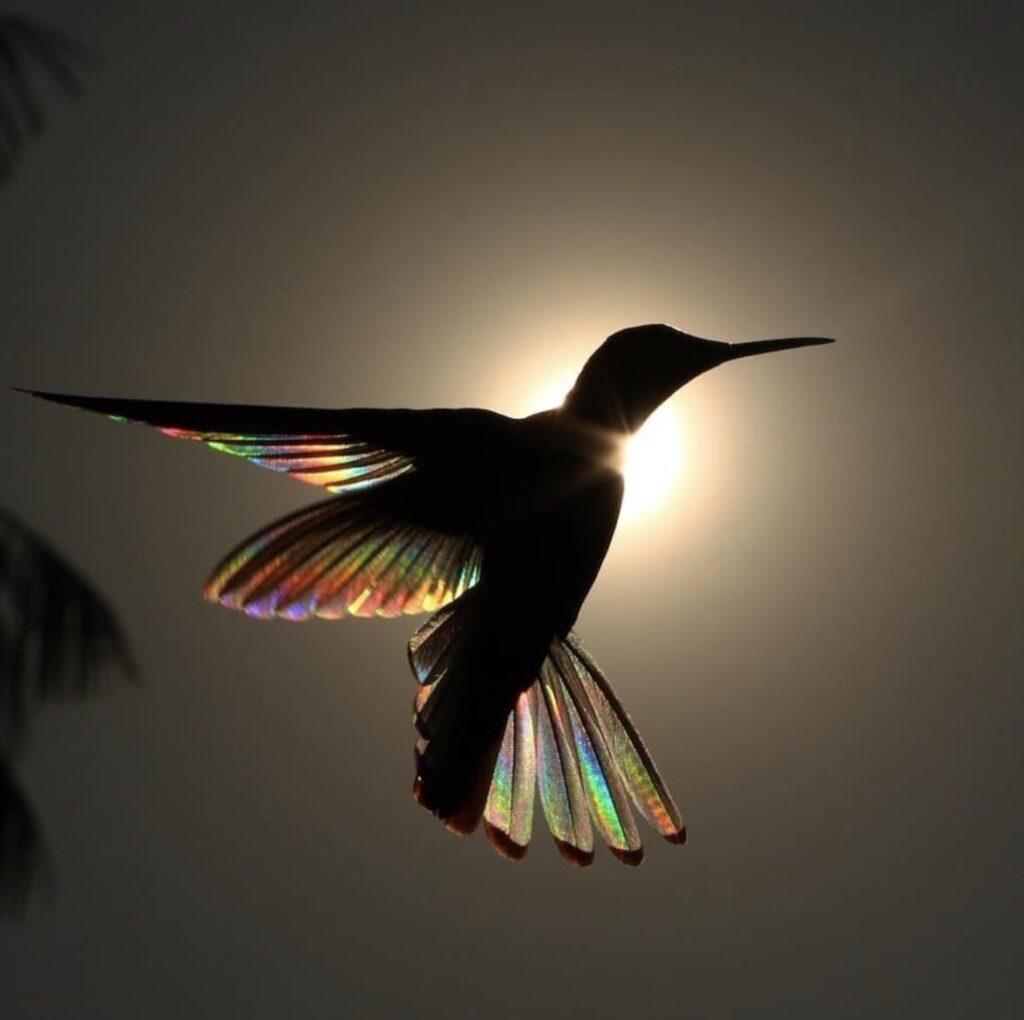
“Sunlight passing through the wings of a Black Jacobin Hummingbird forms a prism of rainbows”. @Buitengebieden on X
By Mariana Meneses
Imagine you’re trying to take a picture of a hummingbird flapping its wings. The bird flaps its wings so fast that a normal camera can’t capture it clearly – at 80 beats per minute for smaller hummingbirds, the wings would just be a blur. But if you use a high-speed camera that takes thousands of pictures per second, you can see each individual wing flap clearly.
Our perception of reality is continuous, but our eyes and brains can only perceive part of this reality, with a limited number of frames per second.
As science communicator Davi Calazans explains in his channel, the human eye can capture about sixty images per second, but this number varies across species.
“Turtles can only see fifteen images per second, while flies perceive around two hundred and fifty. In other words, turtles see four times fewer images than we do, and flies see about four times more than us humans. Relatively, time passes four times faster for turtles and four times slower for flies. It’s almost as if time is distorted. Of course, we’re not talking about the distortion of time itself; we’re merely discussing the distortion of our perception of it. However, this doesn’t change the fact that, for these insects, we humans move almost in slow motion. It’s because of this that flies can easily evade us—not because they’re so fast, but because their compact nervous system is ultra-quick at sensing stimuli and reacting to them.”
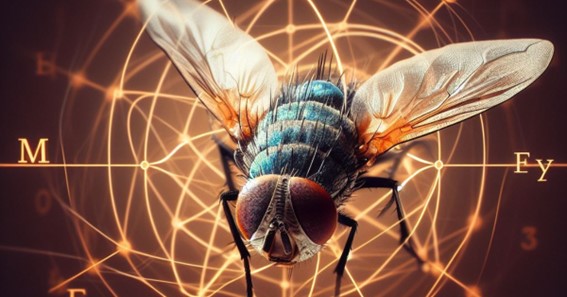
Image generated using Microsoft’s DALL-E-powered chatbot.
Now, think of electrons as the hummingbirds.
An electron is a tiny particle that carries a negative charge and is a fundamental part of any atom, orbiting the nucleus at relatively great distances. Electrons move so fast (in billionths of a second) that we can’t see what they’re doing with our usual tools.
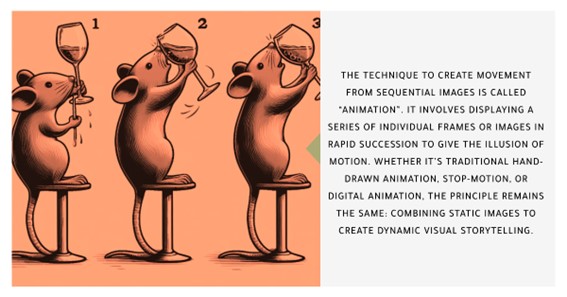
Poster generated using Microsoft Designer.
But the researchers who won the Nobel Prize found a way to make a kind of “high-speed camera” for electrons.
Pierre Agostini, Ferenc Krausz, and Anne L’Huillier won for their experimental methods that generate attosecond pulses of light for the study of electron dynamics in matter. An attosecond is one quintillionth of a second – as a fraction that’s an astoundingly small 1/1,000,000,000,000,000,000th of a second.
In simpler terms, they used extremely short flashes of light, each lasting only a few billionths of a second. With this process, they could “see” how electrons move and interact inside atoms and molecules. For example, they could watch an electron move from one part of a molecule to another, which is a key step in many chemical reactions. It is like how a film camera captures a series of still images which show movement.
This is like witnessing the hummingbird’s wings flutter in the journey from one flower to another.
Prior to the laureates’ breakthroughs, electrons effectively appeared as blurs under the most advanced microscopes – their movement and behaviour were too rapid to follow.
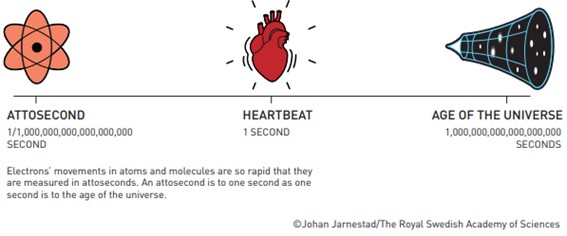
What is an attosecond? Image: Nobel Prize Org.
This new ability to “see” electron behaviour helps us understand many processes in physics, chemistry, and biology.
By providing shorter snapshots of atoms and molecules, attosecond spectroscopy has helped researchers understand electron behaviour in single molecules, such as how electron charge migrates and how chemical bonds between atoms break. Applications of the technology range, for example, from understanding how electrons behave in materials for electronics, to identifying differences among molecules in medical diagnostics.
It’s like being able to see a whole new world that was too fast to see before.

Image generated using Microsoft’ s DALL-E-powered chatbot and Microsoft Designer.
So, what do flies, hummingbirds and the 2023 Nobel laureates’ accomplishments have in common?
Well, for one thing, they all favour some contemplation on the boundless mysteries that may lie beyond the limits of our perception, prompting reflection on the timeless interplay between the seen and the unseen in the tapestry of existence.
Interested in exploring related topics? Discover these recommended TQR articles:
- Saving the Planet: Nobel Prize Recognizes Climate Science, but Will Mindsets Change in Time to Sustain Nature’s Potential and Value?
- The Future of Quantum Computing Accelerates, Many Qubits at a Time
- Revolutionizing Mobility: Are EVs, Hyperloop and Supersonic flight the future of transportation?
- Clean Technologies and Technologies That Clean: Undoing the Climate Damage We Have Caused
- Revolutionizing Food Production to Power a Growing World Population
- Preserving Biodiversity: The Race Against Ecosystem Loss


